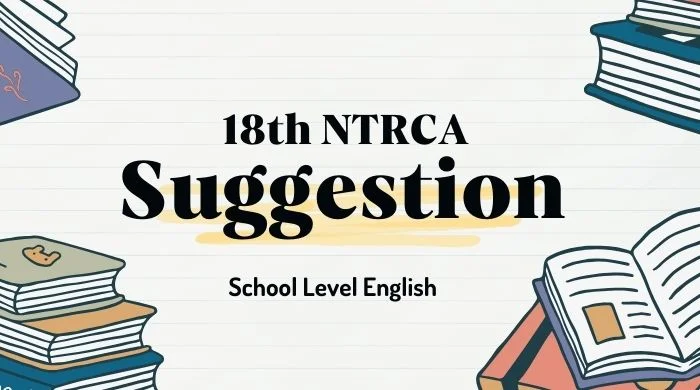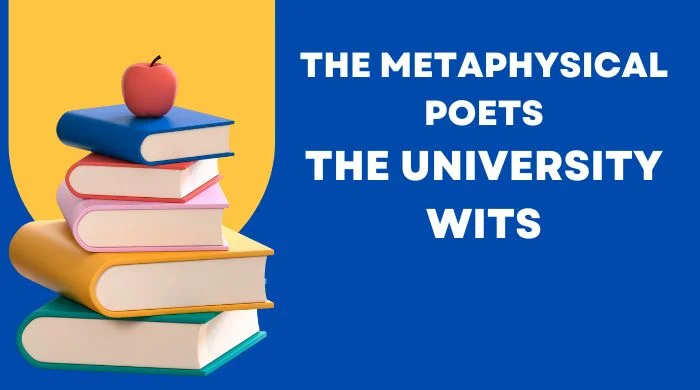Discover the beauty of the Poetry 4 Line Stanza, where brevity meets depth. Explore timeless quatrains that captivate with their rhythmic elegance and profound simplicity, each verse a gem that leaves a lasting impression. Unveil the artistry behind concise poetic expression, where every word counts.
Poetry 4 Line Stanza
A stanza is a fundamental unit of poetry. It consists of a group of lines that form a separate division within a poem. Stanzas are similar to paragraphs in prose writing, separated by a space. Each stanza in a poem may have a consistent number of lines, a specific rhyme scheme, and a coherent theme or idea.
Stanzas can vary in length, structure, and form depending on the poet’s intention and the style of the poem. Some common types of stanzas include:

Couplet: A stanza consisting of two lines, often with a rhyming pattern. Tercet or Triplet: A stanza comprising three lines, which may or may not rhyme.
Quatrain: A stanza consisting of four lines with various rhyme schemes.
Quintain or Quintet: A stanza with five lines, which may follow different rhyme schemes.
Sestet: A stanza consisting of six lines, commonly found in sonnets and other poetic forms.
Octave: A stanza with eight lines, often used in poetic forms such as the ottava rima or the villanelle.
The arrangement of Poetry 4 Line Stanza contributes to its overall structure and rhythm. It allows poets to convey their ideas, emotions, and imagery in a structured and cohesive manner. Stanzas help to organize the flow of thoughts and create pauses or breaks that guide the reader through the poem.
Elegy
The conception of elegy has undergone change throughout the centuries. In Greek and Roman literature, the elegy was any poem composed in a special elegiac meter (alternating dactylic hexameter and pentameter lines).
In England, until the 17th century and even later, the term was often applied to any poem of solemn meditation. In present critical usage, an elegy is a formal and sustained poem of lament for the death of a person of particular importance to the poet. Sometimes the term is more broadly used for meditative poems, such as Gray’s “Elegy Written in a Country Churchyard”, which deals generally with the passing of men and the things they value. (Poetry 4 Line Stanza)
An elegy is different from a dirge, though a dirge also expresses grief on the occasion of death. Compared to an elegy, a dirge is short, less formal, and is usually represented as a text to be sung. Threnody is now used mainly equivalent for dirge, and monody for an elegy or dirge which is presented as the utterance of a single person. For example, Milton describes his “Lycidas” as a monody.
An important species of the elegy is pastoral elegy. It represents both the mourner and the one he mourns as a shepherd. (Poetry 4 Line Stanza)
Tennyson’s “In Memoriam”, and Auden’s “In Memory of W.B. Yeats” are examples of elegies lamenting the death of a particular person. And Milton’s “Lycidas”, Shelley’s “Adonais”, and Arnold’s “Thyrsis” are the most notable English pastoral elegies. (Poetry 4 Line Stanza)
Sonnet
A sonnet is usually defined as a lyric of fourteen lines of iambic pentameter. Originally a stanza of Italian origin, the sonnet has developed into an independent lyric form. It originated in thirteenth-century Italy, was developed by the Italian poet Petrarch, and was brought to England by Sir Thomas Wyatt. The sonnet was greatly modified by the Earl of Surrey and by Shakespeare.
The two most important types of sonnet are the Italian or Petrarchan and the Shakespearean or English. The Italian form, also called the regular or classical sonnet, is divided into the octave (first eight lines) and the sestet (the last six lines). The rhyme scheme of the octave is abba abba, and that of the sestet is cde cde or cd cd cd.
The English sonnet characteristically has four divisions: three quatrains and a rhymed couplet. The rhyme scheme is abab cdcd efef gg. There is an important variant of the English type the Spenserian sonnet, developed by Edmund Spenser. It is regarded by some as another type of sonnet. It has the rhyme scheme: abab bcbc cdcd ee. (Poetry 4 Line Stanza)
In the Petrarchan form, the octave establishes a theme or poses a problem that is developed or resolved in the sestet. In the Shakespearean or English type, a problem is turned about in the three quatrains, and the couplet produces a summary statement or a witty twist. (Poetry 4 Line Stanza)
The themes of sonnets have changed over the years. Courtly love was its theme in its early days, but now it has a good many themes. (Poetry 4 Line Stanza)
Lyric
Lyric is a type of poetry marked by emotion, melody, imagination, and a unified effect.
Originally, lyric poetry was sung to the accompaniment of a lyre. Today, the term encompasses poetry in which the poet expresses personal thoughts and feelings, as opposed to epic or dramatic poetry, which describes external circumstances and events. The lyric is a broad type, and imagination, description, and meditation.
In English literature, the history of the lyric goes back to the earliest epic, Beowulf, which contains passages with lyric qualities. The Anglo-Saxon poem, Deor’s Lament is essentially lyric in purpose. Before 1400, Chaucer had written a number of lyrics, many modeled on French forms.
In Elizabethan England, the lyric was further developed by Johnson, Herrick Sidney, Spenser, and Shakespeare. The great Romantic poets, Wordsworth, Coleridge, Byron, Shelley, and Keats, and the major Victorian poets extensively used the lyric form. The lyric continues to be a widely used form of poetic expression.
Dramatic Monologue
Dramatic monologue is a kind of poem in which a single character reveals a dramatic situation. He is overheard speaking to a silent listener. Robert Browning perfected this form of poetry. In its complete form, it has the following characteristics:
(1) A single person, who is not the poet himself, utters the entire poem in a specific situation at a critical moment.
(2) This person addresses and interacts with one or more other people. But we know of the auditor’s presence and what they say and do only from clues in the discourse of the single speaker.
(3) The monologue is organized in such a way that its focus is on the temperament and character that the dramatic speaker unintentionally reveals in the course of what he says.
A dramatic monologue differs from a dramatic lyric; in the dramatic lyric, the speaker does not reveal his character inadvertently in the course of arguing. For example, Donne’s “The Canonization” and “The Flea” are dramatic lyrics, not dramatic monologues, because there, the focus of interest is on the speaker’s ingenious argument, on the revelation of his character. (Poetry 4 Line Stanza)
Browning poems like “My Last Duchess”, “Andrea del Sarto”, and many others are good examples of dramatic monologue. Tennyson’s “Ulysses”, and Eliot’s “The Love Song of J. Alfred Prufrock” are also good examples. Poets like Frost, Robinson, Pound, and Lowell also wrote some good dramatic monologues.
Ode
“An ode is a long lyric poem, serious in subject, elevated in style, and elaborate in its stanzaic structure.” (Abrams). It is often written to praise someone or something or to mark an important occasion. Pindar, a Greek poet, developed the form of the ode from the varying stanza pattern of the choral song in Greek tragedy.
His complex stanzas were patterned in sets of three: moving in the form of the ode from the varying stanza pattern of the choral songs in Greek rhythm to the left, the chorus chanted the strophe, moving to the right it chanted the antistrophe; then standing still it chanted the epode. (Poetry 4 Line Stanza)
The regular or Pindaric ode in English is a learned imitation of Pindar, with all the strophes and antistrophes written in one kind of stanza, and all the epodes in another. Thomas Gray’s “The Progress of Poesy” is an example.
The irregular ode was introduced in 1656 by Abraham Cowley in English. He imitated the Pindaric style and matter, but disregarded the recurrent strophic triad, and allowed each stanza to find its own pattern of varying line lengths, number of lines, and rhyme scheme. The irregular ode has been the favorite form for the English poets.
Pindar wrote his odes to praise and glorify the winners in the Olympic games. Many of the English odes, early and later, have been eulogistic, praising either a person or art or abstract concept. Wordsworth’s “Intimations”, Shelley’s “Ode to the West Wind”, and Coleridge’s “Dejection”, etc are of this type.
Another type of ode is the Horatian ode which is modelled on the matter, tone, and form of the Roman Horace. It is homostrophic in stanza form, and calm, restrained, and meditative, in contrast to the passion and visionary boldness of the Pindaric ode. Keats’s “To Autumn” is an example. (Poetry 4 Line Stanza)
Ballad
A ballad is a short narrative poem that ordinarily employs a stanza of four lines, with only the second and fourth lines rhyming. Ballads typically tell stories of unhappy love affairs, domestic tragedies, especially family feuds and murders, and of popular outlaws and rebels. They also tell stories of historical events like battles, shipwrecks, and mine disasters, and sometimes of occupational heroes. (Poetry 4 Line Stanza)
Ballads are of three types: The folk ballad, the broadside ballad, and the literary or art ballad. The folk ballad is one of the earliest forms of literature. It is composed anonymously and transmitted orally from generation to generation. It was originally meant for singing or reciting. Folk ballads have been set down in writing only in fairly recent times.
Certain characteristics are common: dealing with common people, use of repetition, simple language, and pronounced rhythm. F.J. Child’s English supernatural, use of dialogue, emphasis on action, use of refrain and, and Scottish Popular Ballads, and B.H. Bronson’s The Traditional Tunes of the Child Ballads, are famous.
A broadside ballad is printed on one side of a single sheet. It deals with current events and is sung to a well-known tune. (Poetry 4 Line Stanza)
Literary ballads are written by well-known authors. So, they are more polished and artful and in elevated language. Keats’s “La Belle Dame Sans Merci” and Coleridge’s “The Rhyme of the Ancient Mariner” are famous ballads of this type.
In conclusion, the Poetry 4 Line Stanza stands as a testament to the power of brevity in poetry. These quatrains, whether simple or complex, showcase a poet’s ability to convey profound emotion, vivid imagery, and compelling narratives within a limited space.
The rhythmic cadence and structured form of the four-line stanza create a memorable and impactful reading experience. As we delve into the rich history and diverse applications of this form, we uncover the timeless appeal and enduring significance of concise poetic expression. Whether you’re a seasoned poet or a budding enthusiast, the four-line stanza offers a perfect canvas for exploring the depths of your creativity and the nuances of your voice.
 Sopner BCS Sopner BCS: We fuel your BCS dreams
Sopner BCS Sopner BCS: We fuel your BCS dreams




3 comments
Pingback: 4 Examples of Tone in Literature - Sopner BCS
Pingback: Short Note On Ballad – Sopner BCS
Pingback: 4 Line Stanza – Sopner BCS